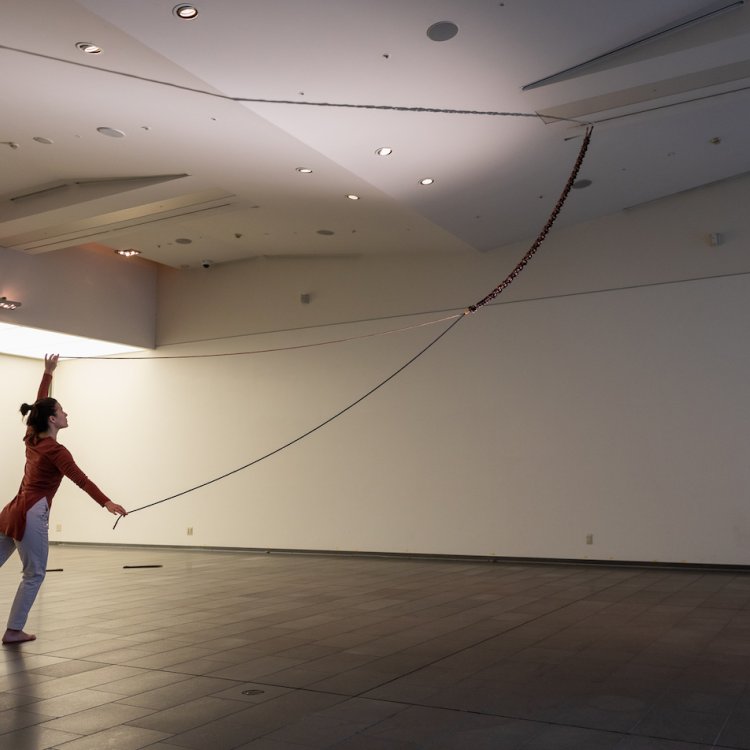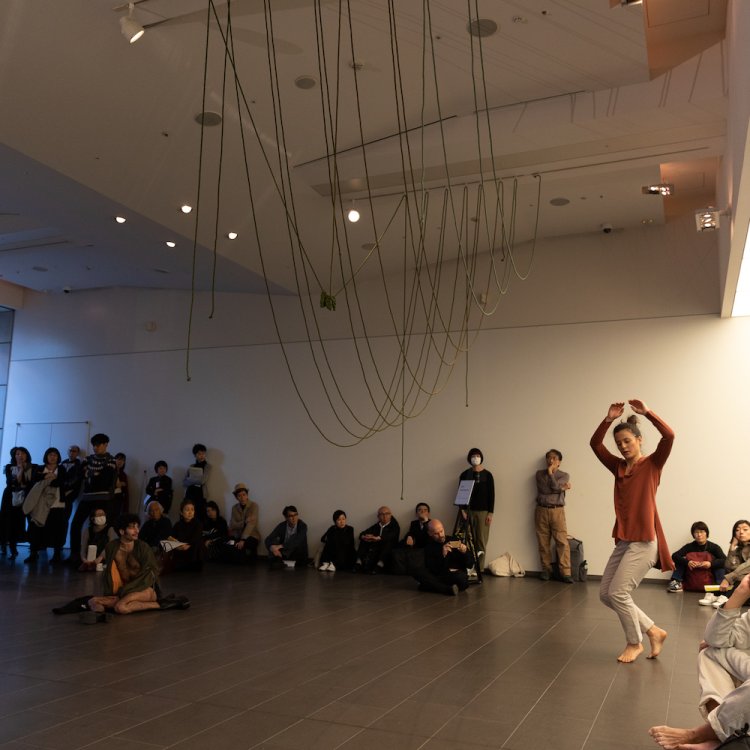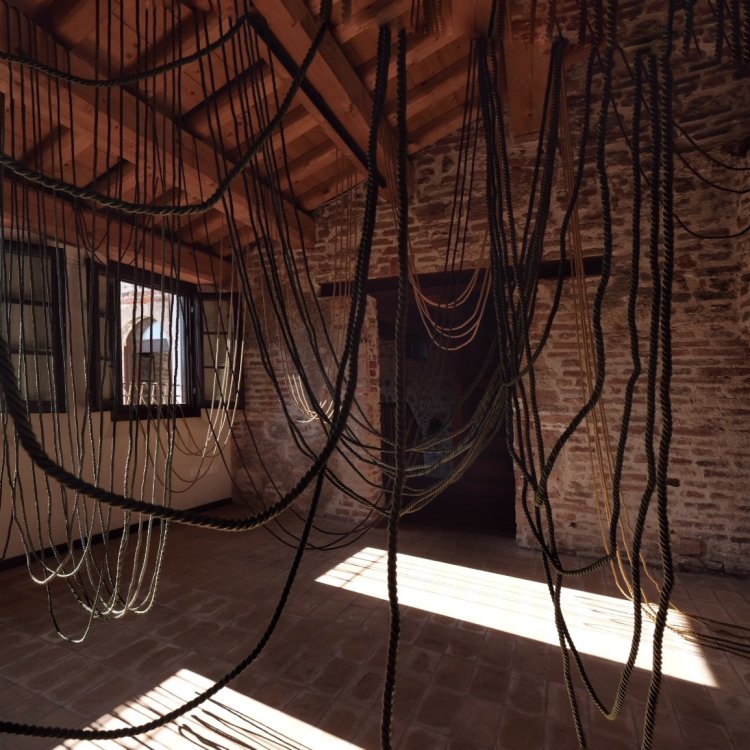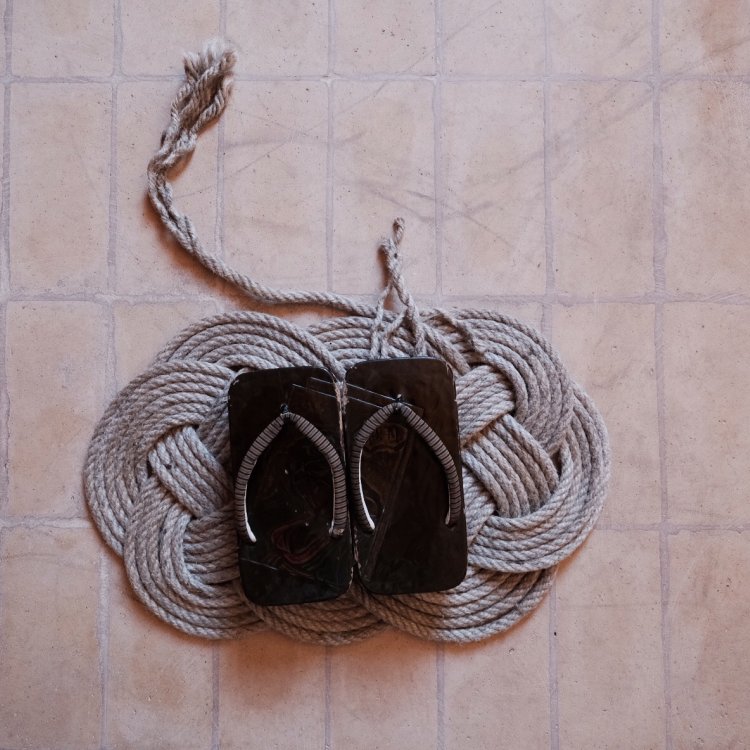Knots
credits
Ropes from Arte Sella, Martino Lando and Weiwuying equipment Professional advise by Ken Hirakura (knots Master) and technical support by Hsiau Kai Lin. special thanks to Roberto Casarotto, Elisabetta Bisaro, Atsuko Hisano, Taro Inamura, Gwen Hsin Yi Chang, Gin Huang, Cynthia Chiang, Hakuyo Miya, Greta Pieropan, Yoko Yoshino, Gabriella Biancotto, Sara Lando, Morishita Studio and the artists Teita Iwabuchi, Ming-Hwa Yeh, Sorour Darabi Previous performance places Torre delle Grazie of Bassano del Grappa, La Briqueterie CDCN of Val-de-Marne and the Italian Institute of Culture in Tokyo CSC Bassano del Grappa, Italy La Briqueterie CDCN du Val de Marne, France The Saison Foundation Tokyo, Japan The Italian Institute of Culture in Tokyo, Japan Weiwuying National Kaohsiung Center for the Art’s Kaohsiung, Taiwan Dancing Museums Co-founded by the Creative Europe Programme of the Europena Union
material canapa/cotton/upholstery ropes and bells
the symbol of the knot represents an archetypal and ancestral idea rooted deep in the human universe and, in particular, in many of its basic mental processes: this image is able to quickly awaken a myriad of concepts and feelings, even of considerable complexity. It is perhaps for this reason that in every culture the node always plays a leading role, overcoming geographical boundaries and cultural limits.
A work concived for Museum of Human E-motions: an experimental creative development of public space project presented by four international institutions supporting contemporary creations: the National Kaohsiung Center for the Arts (Weiwuying), Centro per la Scena Contemporanea Bassano del Grappa, Italy, Centre de développement chorégraphique national du Val-de-Marne, France, and The Saison Foundation, Japan. Partner institutions delegate an artist/choreographer to research and stay in different spaces in four cities - Bassano del Grappa, Vitry Sur Seine, Tokyo and Kaohsiung over an eight-week period from August, 2019 to January, 2020 - bringing a fresh perspective to the relationship between their own artistic creation, local communities, and urban spaces. Their artistic creations focus on using objects or their own stories brought from their hometowns generating conversations about memories and e-motions. The residency project allows the artists to explore the possibilities of communicating with the public using choreographic language.



